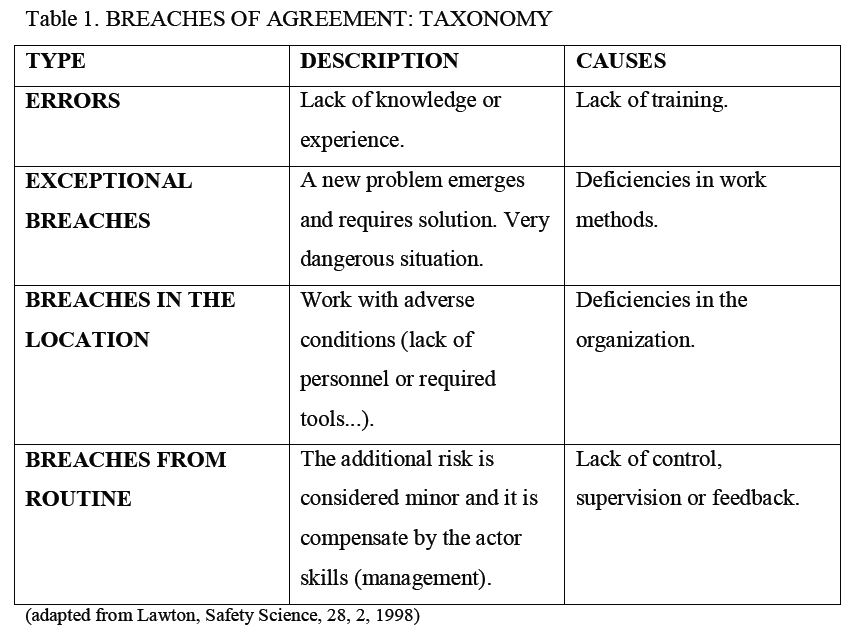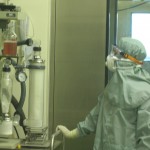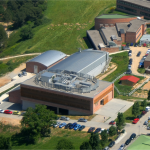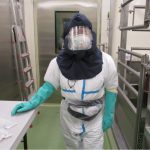Labour Accidents: It shouldn’t be attributed to “bad luck”
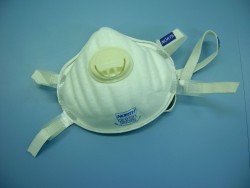
The unwanted events (UWE) are a constant in our lives. A very common example could be that moment when we run to catch a bus and, just when we will reach it, the doors closes and the bus starts…
Accidents are a subset of these Unwanted Events, a subset that can generate consequences for the health. Imagine that just when we run to catch the bus, one foot stays and get hurt in the moment we jump from the sidewalk…
In general, accidents are a result of the human activity, something that happens suddenly, unexpected and in short-lived form and it make place for an unwanted result (Hollnagel, 2004).
Inside the group of general accidents there are the accidents at work: in other words, the pricks for keep trying to tap the needles with the corresponding caps…
Most of the UWE happens to us individually. We must not forget that all the accidents always are generated in a social context. If we try to apply our individual experience from the accidents we were involved, the conclusions can be, often, inaccurate. Besides, it can lead us to take actions that will not contribute to solve the problem.
Which are the real causes of the labour accidents? What do you think about that? And do you have an idea of what the rest of the people think about that? What does the experience and the corroborate information tells us?
There is a list of possible common causes of accidents:
- Poor conditions in the workplace.
- Lack of accessibility to the workplace.
- Inefficient protection of machines/devices.
- Unsafe work area.
- Old facilities.
- When production must be out at any cost.
- Lack of required tools and resources.
- When the work requires dangerous operations.
- Due effort or forced posture.
- Lack or inadequate personal protective equipment.
- Tiredness or exhaustion.
- Too much confidence or for habit.
- Poor design of the work place.
- Lack of a solid training.
- The work rate is very high.
- Lack of space.
- Lack of experience in the job.
- Other causes related with the traffic.
You may choose one, well, there is no need to be drastic, 3 majorities causes and keep it written on paper before keep on reading.
What is the major opinion between the people?Usually, there are three basic ideas shared by most of the people: overconfidence, bad luck (this is the first time it has happened to us) and human error. Even Joan Rosell, in some journalistic comment said “even the destiny has its importance” (!). Surprisingly, both business leaders and workers agree on this point. In other words, both of them indicated that overconfidence, distraction and because of the habit are the major causes for accident (little more than 50%).
The theory and preconceived ideas versus experience.
Tarvainen and Mattila published in 2000 a thorough investigation about mortal accidents occurred between 1985 and 1996, over than 400 cases.
They concluded that in most of the cases were multicausal (with five causes per accident) and the most common were the organizational causes (around 50%). In the other hand, inside the organizational failure it was detected four most frequent errors, first the working methods (30%), maintenance (little more than 15%), the supervision and the information-cooperation (this last two scoring less than 15%).
When the classification was made discriminating between the causes of the organization, environment, equipment and employees, the rates were 50% for the organization, slightly less than 20% for the environment and little more than 10% for the equipments.
In the qualitative analysis of mortality from accidents at work in Spain (2005-2007) work organization and task (responsible for 31% of the accidents) and the prevention management (17%), both linked to the organization, represent the 50% of accidents.
Therefore, the errors responsible for leading to accidents are multiples, and nowadays it is commonly accepted the principle of the multicausality.
We must separated errors and failures. Errors can be a result from a lack of knowledge or experience (individual or from a work) and they are fought with continuous training for the employees. The breaches – you may see the different types in the Table 1 – affect much more the organization. Finally, a continuous tolerance in the breaches of the safety rules it may leads into an excess of individual confidence with serious consequences.
Throughout the twentieth century, and so far this century, many theories have been developed to explain the accidents rate and seeking for a way to reduce it. About the evolution of the models it can be extract interesting facts, but that stays for the next post.
But that, that’s definitely another story.
PS: Keep the paper saved until the second post about ‘Labour accidents’, please.


